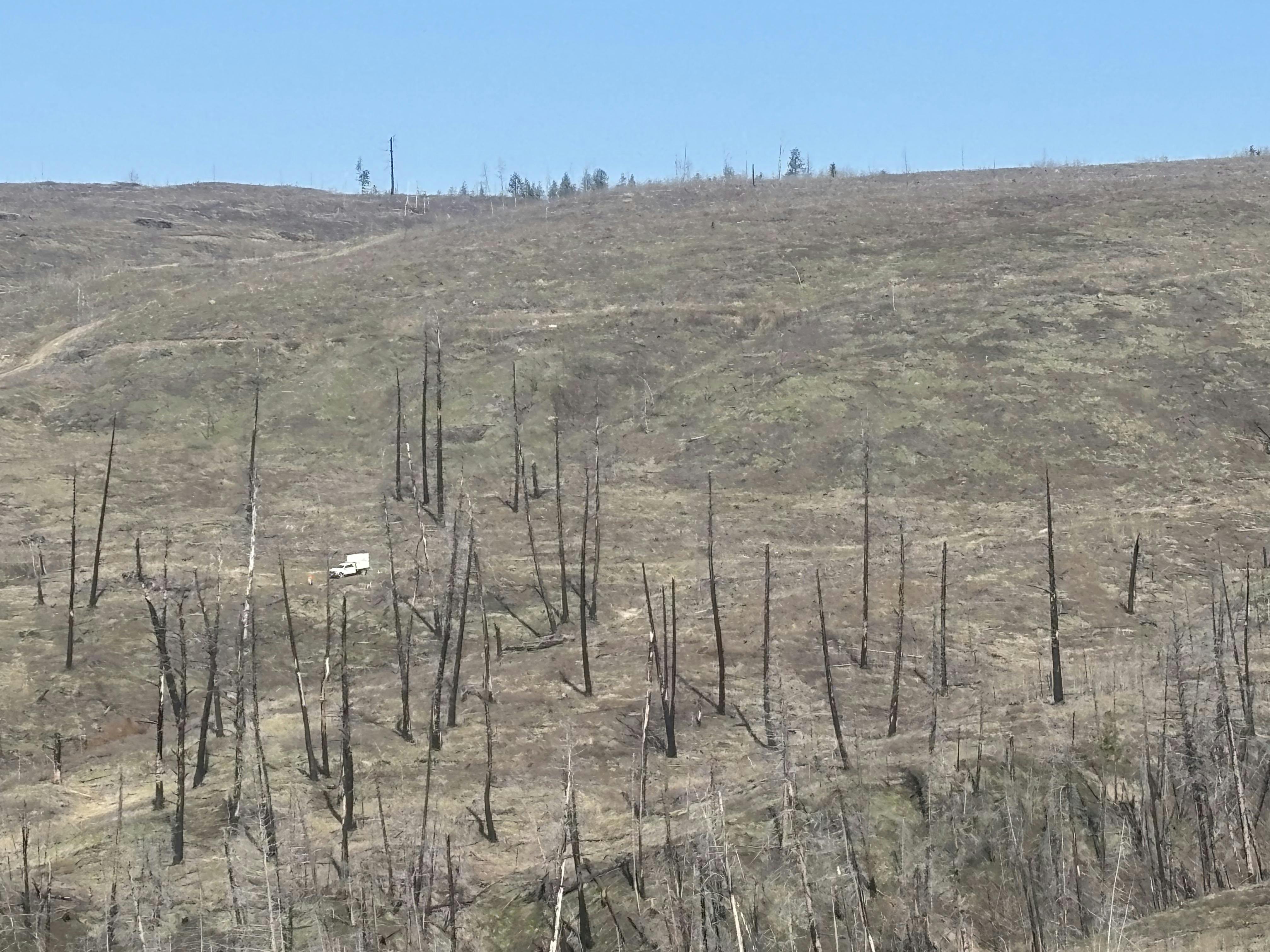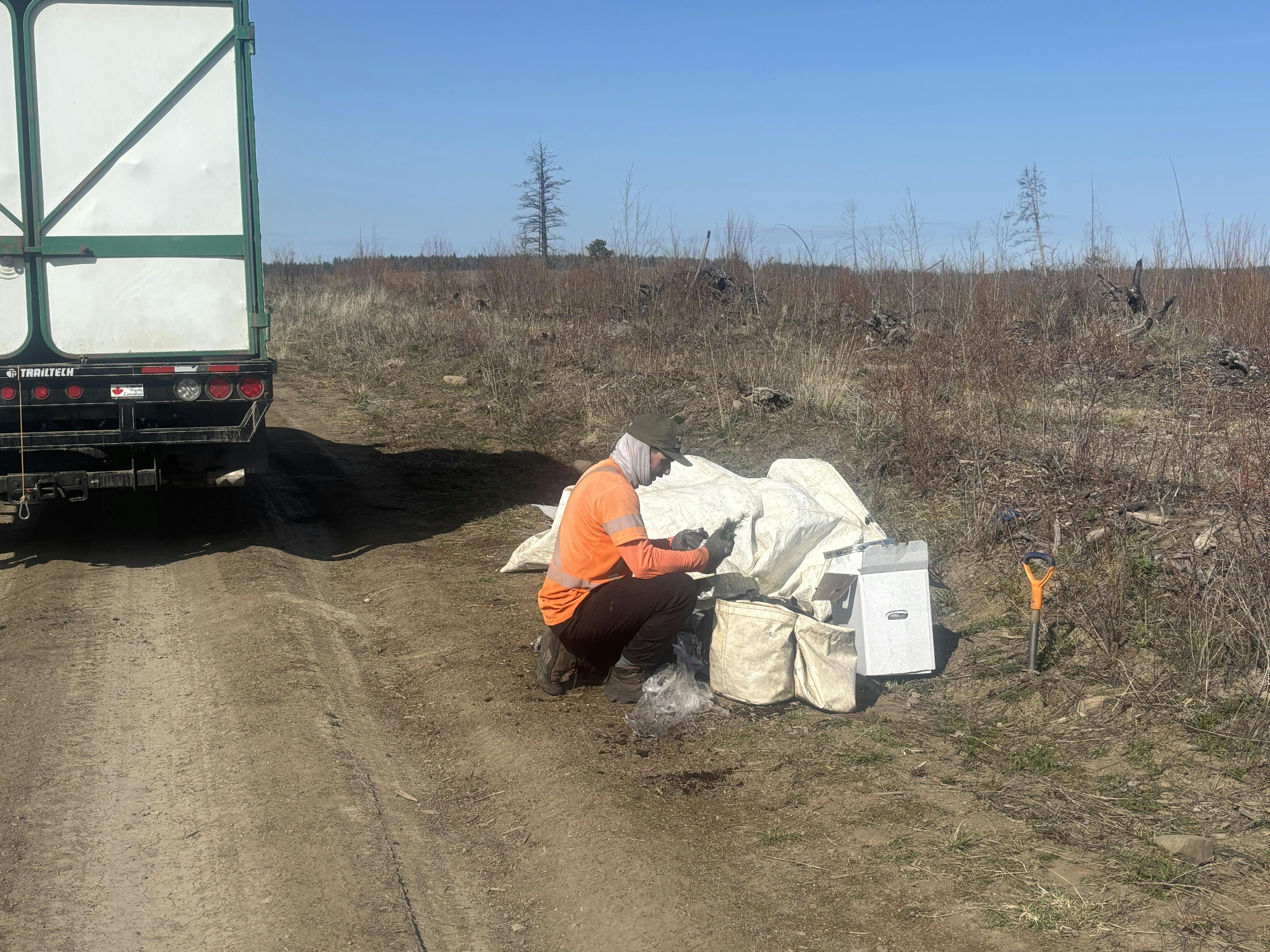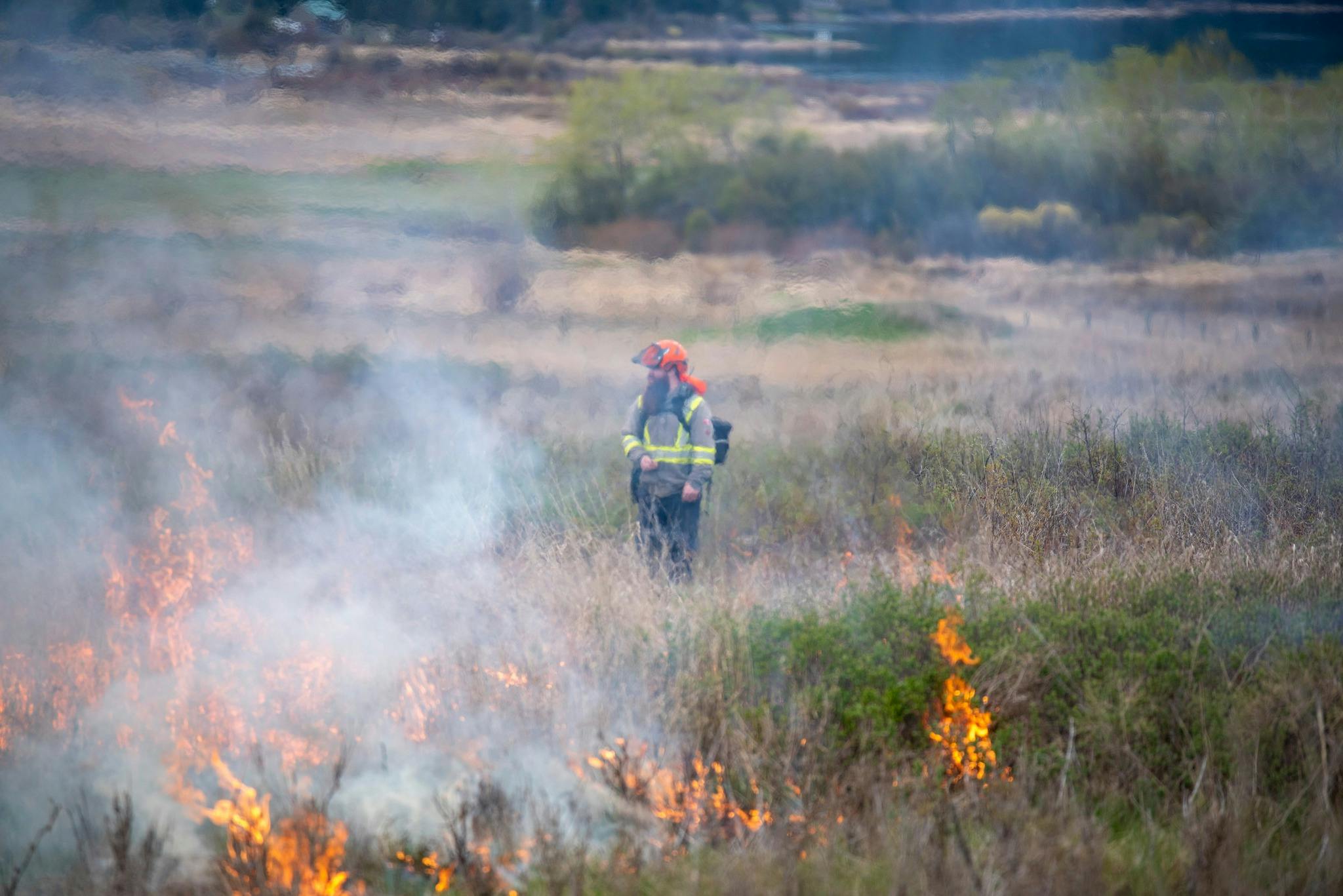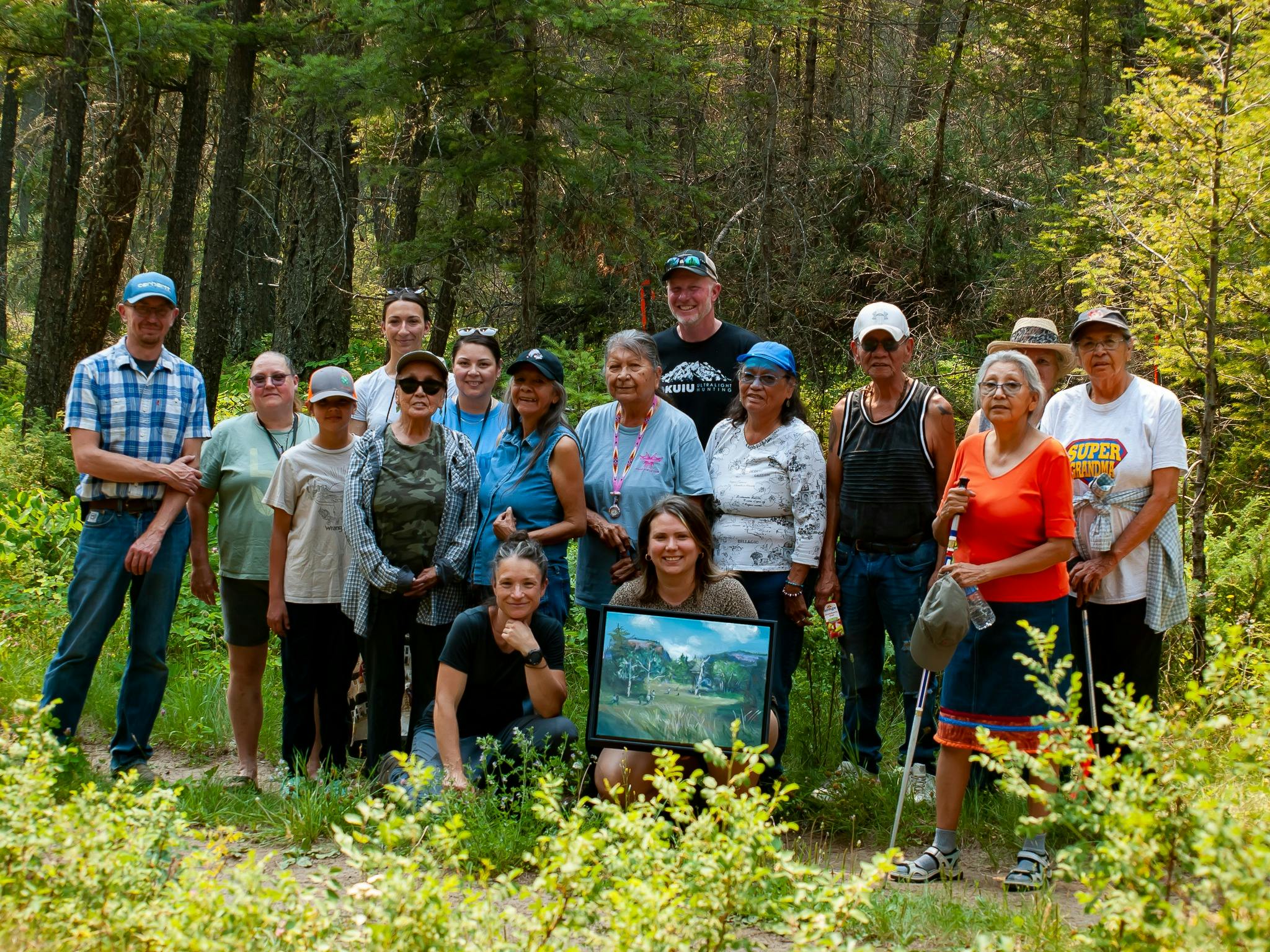Project Snapshot:
- Location: Williams Lake, British Columbia
- Trees Planted: Over 900 thousand since 2022 (with an additional 250k still to plant)
- Key Species: Douglas fir, Ponderosa pine, with earlier plantings of spruce and lodgepole pine
- Partners: Sugarcane First Nation, 2 Billion Trees Program, Tree Canada, Tolko Industries, Dynamic Reforestation
- Focus: Post-wildfire recovery, climate resilience, Indigenous leadership
- Community benefits: Healing the land, strengthening cultural identity through reforestation grounded in Traditional Ecological knowledge, and restoring a sense of pride and stewardship in the community
- Next steps: Fill planting, road decommissioning, and ongoing community engagement.

The still-scarred landscape seven years after the 2017 wildfires.
Six hours northeast of British Columbia’s Okanagan Valley lies Williams Lake First Nation (WLFN)—a community forever transformed by the province’s catastrophic 2017 wildfires, which forced the city to evacuate for almost two weeks. The question the community faced in the wake of the devastation: how and when to restore everything that was lost?
Since 2022, WLFN—with the help of the 2 Billion Trees (2BT) program and other partners—has planted over 900,000 trees and isn’t stopping yet. What began modestly in 2019 with a few thousand trees and a scarred landscape is now a multi-year, large-scale restoration effort drawing on Traditional Ecological Knowledge to achieve biodiversity and fire resilience goals.
A thoughtful approach to replanting
After the 2017 fires, the community didn’t immediately jump into replanting. Some salvage cutting (cutting of dead, dying, or deteriorating trees) was done to extract standing merchantable timber, but serious replanting efforts didn’t start until 2022. Indeed, the community wanted to take time to reflect on the kind of reforestation it wanted to undertake.
One reason WLFN didn’t immediately begin post-wildfire restoration was that it wanted to take a different tack. For example, the community rejected the idea of the usual 1,600 stems per hectare in favour of a different, ecological-focused density—one that would create wildlife corridors, restore grasslands, and reflect the Traditional Ecological Knowledge passed down through generations. In fact, the previous reforestation density was one of the main reasons why the 2017 fires were so severe.
Collaborating with the 2 Billion Tree (2BT) program
WLFN’s relationship with the 2BT program has grown since the 2022 project and is now proving invaluable. As John Walker, the community’s stewardship forester, notes, “Although the community didn’t qualify for 2BT’s Mass Planting Funding Stream, it did secure a multi-year agreement through its Indigenous Funding Stream and has built a close, collaborative relationship with the program. It’s been great. We get to work together and bounce ideas off each other.”

Preparing tree planting bags for spring 2025 plant. Credit: WLFN
Profound community impacts
Beyond the trees, the 2BT program has had a profound impact on the community. According to John Walker, “The community is thrilled that we’re planting—their eyes light up when they hear that we’re up there planting.”
And it’s not just what’s being planted—it’s how it’s being planted. The community’s approach to reforestation, which includes restoring traditional burning and expanding tree species diversity, will return the land to how the Elders remember it—open forest. According to the Elders, the forest was so open before the Gold Rush that one could ride a horse to Alkali Lake, 50 km to the south, without trails. Walker added: “It’s great to see just how happy the community is that we are reforesting the land. It’s a big scar, and there’s a lot of healing that happens from this.”

On-reserve grassland restoration burn, spring 2025. Credit: WLFN
Looking ahead
In the years to come, the community plans to continue infill planting to close canopy gaps, expand wildlife corridors and species diversity, and rehabilitate old cutblock roads to support watershed health. By 2027, WLFN expects to have planted over 1.2 million trees through its 2BT-funded projects—a testament to what’s possible when Indigenous knowledge, local leadership, and long-term funding combine to maximize impact.
Interested in sharing your 2BT success story?
The Reforest Canada Collective (RCC) is always looking to tell the stories of forest restoration projects across Canada that are having meaningful impact on communities and the landscape. If you’d like your project to be featured, contact us at hello@reforestcollective.ca —we’d love to hear from you.
Related Articles

Vegetation Information System Saskatchewan (VegISS)
Database application initiated in 2009 to store data from rangeland, riparian health, and vegetation surveys within the province of Saskatchewan
See Resource

Operational-scale Carbon Budget Model of the Canadian Forest Sector (CBM-CFS3) version 1.2: user’s guide
Updated guide for the Carbon Budget Model of the Canadian Forest Sector (CBM-CFS3) version 1.2
See Resource


